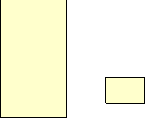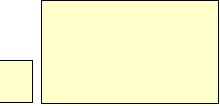








Acknowledgements: We would like to thank the USDA Forest
Service for funding this work, and USDA-APHIS for the flight
intercept traps. In addition we would
like to thank all of the park managers who allowed us to work in their parks as
well as Molly Cypher, Heather Johnson, Eric Van Wormer and Robert Benson for
assistance in the field.

Introduction
•Emerald
ash borer (EAB) was first found July 2002 on ash trees in southeastern
Michigan
•This
wood- boring beetle is an exotic species from Asia and is capable of killing
all major species of ash in North America
•To
refine current trapping methods and gain insight into EAB landing behaviors,
four studies were conducted in summer 2005 at six sites near Detroit where EAB
populations are established
•Trapping
will continue in 2006 to further refine our understanding of EAB detection
tools
EXPERIMENT 1:
Attractiveness of colored
panel traps to EAB

EXPERIMENT 2:
Comparing the number of EAB caught on ungirdled trap trees and trap trees girdled in 2004 or 2005

EXPERIMENT 3:
Comparing the attractiveness
of baited and unbaited purple traps with girdled and ungirdled trap trees

EXPERIMENT 4:
Using trap trees to examine landing behaviors of EAB

Methods
• 3
treatments of 4-6 trees (girdled in 2004, girdled in 2005 or ungirdled)
were located at 4 sites in southeastern Michigan
(Figure 1, Sites 2, 4, 5, 6)
•Trees
were girdled approximately 0.5 m below dbh using a
chainsaw
•Trees
were wrapped at dbh with cellophane and coated with Tanglefoot®
•Trees
were monitored weekly throughout the summer for EAB

Methods
•Colored
sticky traps were placed along the edge of a forest at
Kensington (Fig. 1, Site 5)
•In round 1,
4 different trap colors were tested: pink, yellow,
clear, and purple. In round 2,
the yellow traps were replaced with fresh purple
traps to test the effects of color fading due to sun exposure.
Difference in overall catch in two studies is due to time
of year of trapping

Left
and Right: Colored sticky traps, each trap was a
box mounted on a 1.3 m wooden stake. Paper
sheets were laminated, stapled to the box
and coated with Tanglefoot ®

Left: An
EAB larva in typical serpentine feeding
gallery
Right:
Adult EAB on ash leaf

Left:
Purple flight intercept
traps
Right: Example of crushed
leaf bait in trap center
Methods
•Traps
were set at three sites (Fig. 1 Sites 1, 2, and 3) within
the infested zone of southeast MI
•Girdled
and ungirdled traps were as described in Exp. 2
•Purple
flight intercept traps were assembled, coated with Tanglefoot® and hung from conduit
pipes 2.1 meters above the ground.
•The
purple traps were baited with crushed ash leaves or scorched
branches, or left unbaited
•Each
treatment was replicated 5 times at each site


B
A
A
A
AB
A
B
B
A
B
B
A
B
Methods
•Every tree
(regardless of species) greater than 2.5 cm dbh in a
0.2 ha area was set as an ungirdled trap tree at three sites
in Southeastern Michigan (Fig. 1, Sites 1, 5, 6)
•Trees were
monitored for EAB and measurements were taken
to assess tree health

Average number of EAB caught on trap
trees of different species








A
B
20.25
12
2.39
137
30.78
9
Fraxinus pennsylvanica
1.00
4
-
0
-
0
Carya ovata
0.36
11
-
0
-
0
Carya glabra
0.29
31
-
0
-
0
Quercus rubra
-
0
2.50
10
-
0
Populus deltoides
-
0
-
0
0.09
34
Acer rubrum
0.05
21
-
0
0.04
47
Ulmus americana
0.09
32
0
13
0.38
39
Prunus serotina
Average EAB caught per tree
Total number of trees
Average EAB caught per tree
Total number of trees
Average EAB caught per tree
Total number of trees
Kensington
Stony Creek
Brighton
SITE


Left:
Girdled trap tree.
Blue signs were
used to identify tree as part
of a research study
A*
A*
B*
B*
*Letters indicate differences between treatments, not
between years.
Results and Conclusions
•Purple sticky panel traps were significantly
more attractive (p<0.05) than pink, clear or
yellow traps (Experiment 1)
•There was no difference in number of EAB
caught on trap trees girdled in 2005 and
ungirdled trap trees (p <0.05) (Experiment 2, 3)
•Trap trees girdled in 2004 caught more EAB
than those girdled in 2005 or ungirdled trees (p<0.05)
(Experiment 2)
•Significantly more EAB were caught on trap
trees (both ungirdled and girdled in 2004) in
2005 than in 2004 (p<0.05) (Experiment 2)
•Purple flight intercept traps caught
significantly fewer EAB than trap trees (p<0.05)
and there was no difference between baited and unbaited traps (Experiment
3)
•EAB appear to land preferentially on ash
trees (93% of total EAB caught were on caught
ash), although they were captured on other tree species (Experiment 4)


Detection tools for Emerald Ash Borer
(Agrilus
planipennis Fairmaire)
(Coleoptera: Buprestidae) in Michigan
Jessica
A. Metzger and Andrew J. Storer
School of Forest
Resources and Environmental Science, Michigan Technological University,
Houghton, MI 49931

B

Objectives
•To
evaluate current and novel trapping methods for EAB
•Experiment
1: To determine if EAB
preferentially lands on clear, pink, purple or yellow
sticky traps
•Experiment
2: To determine how the time since girdling affects tree health
and the number of EAB captured on trap trees
•Experiments
2 and 3: To
determine whether girdled ash trap trees and ungirdled ash trap trees
capture the same number of EAB
•Experiment
3: To determine whether girdled
trap trees, ungirdled trap trees and purple flight intercept sticky
traps (baited and unbaited) capture the same number of EAB
•Experiment
4: To examine the landing
behavior of EAB in a forest setting
•To use
these results to develop trapping guidelines for use in EAB detection
